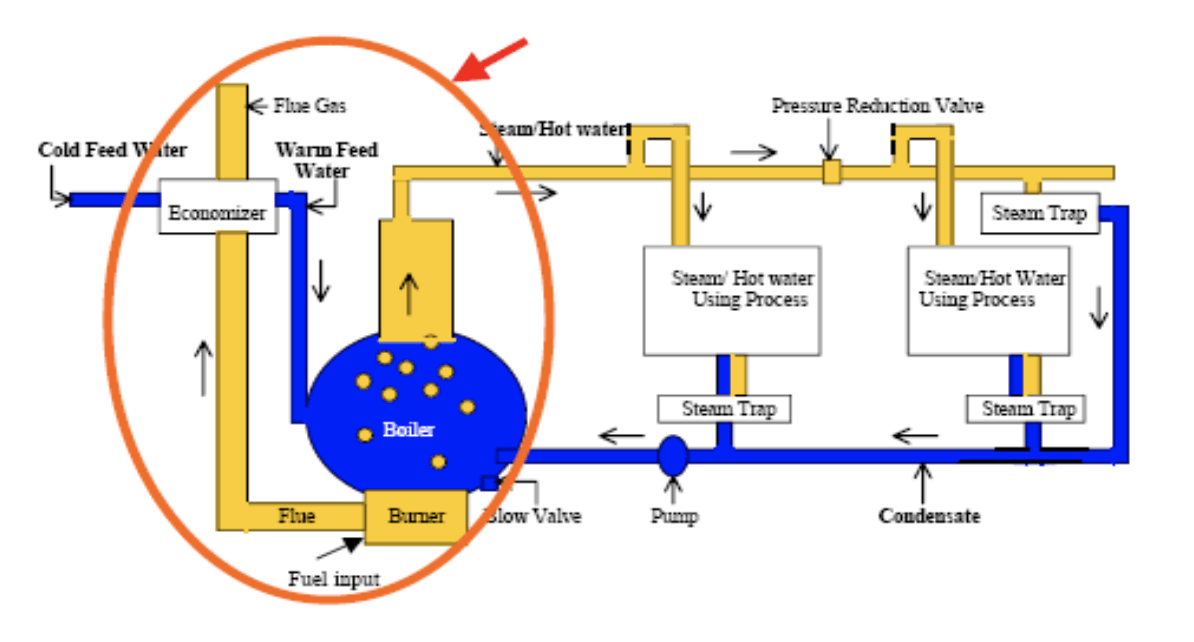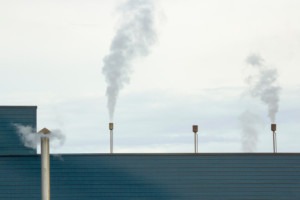by Joe Farsetta, Certified Master Inspector® and Certified Commercial Inspector
Commercial boilers are typically pressurized systems that burn combustible fuel (or sometimes use electricity) to heat water, changing the water’s liquid state to a gas –steam – which is then distributed to provide heating in a building or other structure.
Steam may not be used exclusively for heat. The concept of co-generation has been around for some time, whereby steam is also used to produce power. But for the purposes of this article, we’re discussing the production of steam in a commercial or industrial setting.
It should also be noted that steam can also be purchased. The NY Steam Company (a division of Consolidated Edison) sells and distributes heat throughout the city to many customers.
Basic Operation
Inside a boiler, the burners or electric coils generate heat, which is then transferred to captive water by means of a heat exchanger. The process creates either hot water or steam, depending on the type of boiler. The hot water or steam is circulated via pipes throughout the commercial facility. The water or steam enters radiators or other components that disperse the heat.
Every boiler relies on a continuous heating cycle. Steam may return to the boiler by way of gravity, and when it cools, it condenses back into its liquid state. Some boilers always have hot water at the bottom of a tank, where that water can be circulated to conventional radiators. This is called a hot-water heating loop. It is often seen in residential configurations (usually in basements), where a heating circuit is installed off the boiler and uses a conventional radiator and circulator.
Natural gas is the most common fuel used in commercial boilers. Other kinds of boilers are available that burn fuel oil or that use electric resistance coils to produce heating from electricity. Some boilers rely on bio-fuel. During times of high demand in certain areas, large commercial customers are often forced off of natural gas and must use large stores of fuel oil to maintain operations. This is because the gas utility may have difficulty keeping up with the demand for natural gas in cold weather. In industrial and heavy commercial settings, boiler use is not limited to just heat.

Schematic of an Industrial Boiler System
Common Components
Commercial boilers typically include the following components:
- The burner provides a powerful flame to heat stored water and convert it to steam. The method of combustion and efficiency of the flame contributes to recovery times, efficiency, BTU ratings, reliability, and heat transfer.
- The combustion chamber is the area within the boiler where the fuel is burned. It contains the burners and is specially designed to provide a safe and secure zone for high-temperature combustion. It is often constructed of heavy steel or cast iron, and may include other critical elements. Depending on the size of the unit, the combustion chamber can be cavernous. Older units can become cracked or corroded, rendering them unsafe to operate.
- The heat exchanger functions to transfer the heat produced by the burners to the water in the boiler. Heat exchangers may be composed of a variety of elements, including steel tubes, copper lines, or other sturdy elements designed to withstand high temperatures, transfer heat efficiently, and last a long time.
- The system controls are critical elements of any steam system. Uncontrolled steam is like a bomb. Concentrated, high-pressure steam can be deadly. Steam explosions have been responsible for many deaths. Steam saws are used in the meat-cutting industry, and a blast of concentrated, high-pressure steam can cut a person in half. Therefore, controls are important. The Hartford Loop, which is a standard used on every residential boiler, was the invention of the Hartford Steam Boiler and Inspection Company many years ago to eliminate the likelihood of a steam explosion in a boiler. Beyond the obvious safety aspect, system controls allow users to set water temperature, ignition, air and fuel supply mixtures, and internal boiler and line pressures. Controls regulate when and how often the burner fires, the temperature of the water, the rate at which the fuel is used, and the quality of the mixture of fuel and oxygen. In commercial and industrial settings, controls go well beyond the physical boiler plant itself. Indeed, software-driven monitoring and control systems and mechanisms are often an integral part of the steam system as a whole. As steam often plays an important part of air conditioning by means of humidification, it is important to note whether such a system is present that monitors components of the system, and allows simple command settings and graphical interfaces to monitor, alter, and control a variety of system components.

- Chimneys, exhaust stacks, and flues are designed to safely convey spent fuel gas to the building’s exterior. An exhaust stack may consist of a single large-diameter brick stack, a series of pipes that dump into a larger stack, or any of a number of other configurations. One thing to remember, however, is the height of the stack and its proximity to windows and doors. As exhaust gases exit a stack, downdrafts of powerful winds can cause those same gases to re-enter a facility by way of massive commercial external air-entrylouvers. So, for the inspector, a keen eye and the ability to describe what you see are critical to the success of the inspection.
Inspection records of boilers and maintenance schedules are important. Look for these items when you come across any steam system. High-pressure steam often requires design and installation by experienced and licensed mechanical engineering firms. Installation may be performed by experienced boiler workers and certified welders.
Defective or missing insulation can not only result in heat loss, but for the unlucky person or animal that comes into contact with a hot steam line, their flesh is often left deposited on the pipe. Asbestos-wrapped insulation was often used on steam lines. So, be prepared to ask questions about older buildings that include steam systems and distribution, including when the asbestos was abated, and who performed the work.
Genuine care must be taken to ensure that the boiler is clean and working properly, and that all safety systems are functional and ready to operate when needed. Defective steam plants often result in catastrophic failure, injury, damage to property, and even death. For the commercial inspector, it is important to become familiar with the common critical components of a steam plant, and to discover what the plant is utilized for, as it may not be limited exclusively to the production of heat.

